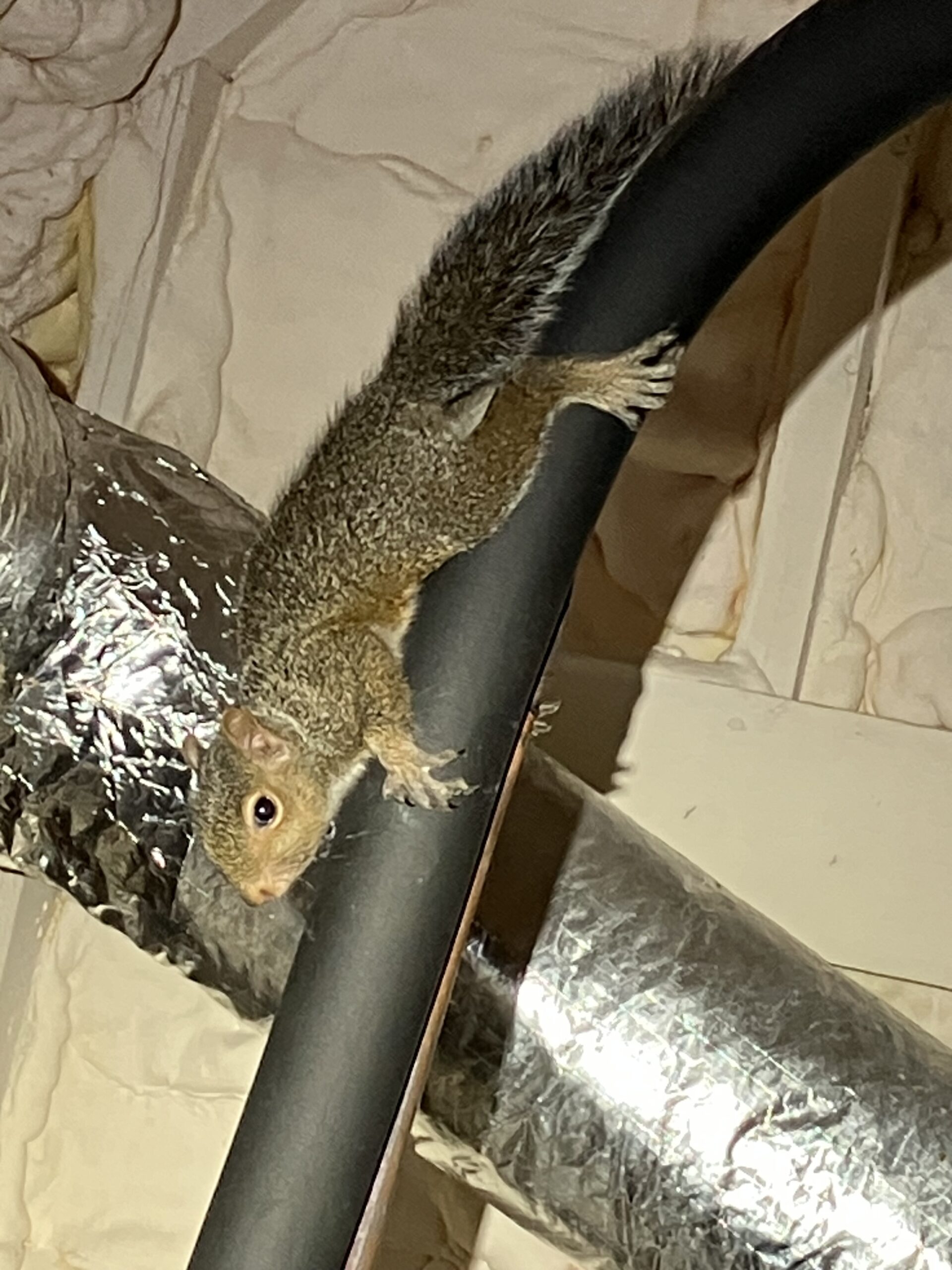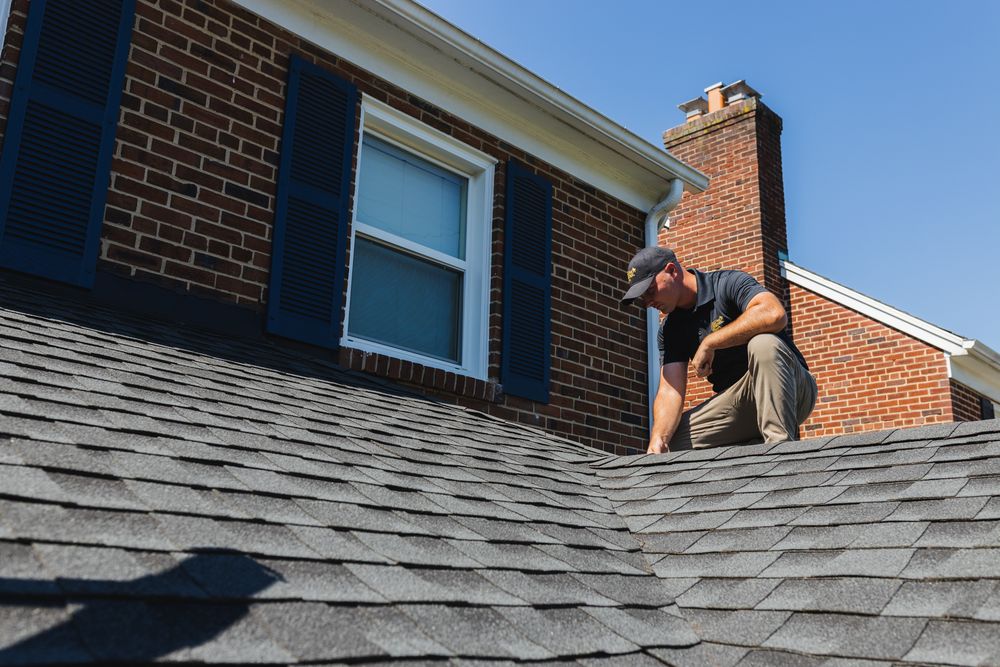Hearing noises in your attic? Seeing gnaw marks on your siding or roof? Smelling foul odors in your walls or ceiling?
Squirrels might be adorable when scampering about the yard, but they quickly lose their charm when living within a home’s walls or attic. Squirrels in homes are energetic and nimble creatures that excel at creating costly damage.
When squirrels move in, they bring costly damage, safety hazards, and potential health risks. Critter Control provides fast, humane squirrel removal solutions to protect your home and your family.
The professionals at Critter Control in Dallas-Fort Worth can safely and humanely remove the squirrels and install solutions to prevent future squirrel problems.
Signs You Have a Squirrel Problem
The most obvious sign of a squirrel are the noises they make.
Other noticeable clues include:
- Chewed wires, wood, or siding
- Squirrel droppings in the attic or crawlspace
- Nests made of leaves and insulation
- Foul odors from dead squirrels or droppings
How to identify squirrel droppings
How to identify squirrel tracks
Why Do Squirrels Enter Homes?
Squirrels seek out homes for warmth and safety, especially during colder months.
- Shelter from weather and predators
- Safe nesting areas to raise young
- Easy access through trees, soffits, vents, and roof gaps
How squirrels get in through roofs and soffits
Identify Squirrels in Attics

Squirrels have different motivations for entering your attic. Most often, squirrels create nests in the attic to give birth and raise their young.
Female squirrels each year typically have two litters that contain an average of two to four young but can carry up to eight. Litters are usually born in late winter and midsummer. Attics, walls, and crawl spaces are the most common places for squirrels to enter homes.
Squirrels do not hibernate. They do need a warm shelter that protects them from harsh winter weather.
Squirrels often cause damage to attic insulation or electrical wiring in the attic. But the most damage is done over time as multiple litters of squirrels are born in or near the home. As these squirrels grow and leave the nest, they often will set up their own nests within the same attic.
If the initial intrusion is not addressed in time, the damage to your home will increase quickly. Not only will they continue to chew through wiring and damage insulation, but in doing so, they will create more entry points for other squirrels.
Where Do Squirrels Live in Fort Worth?
Tree squirrels enter homes looking for shelter. Some types of squirrels can give birth to two litters in a year. During their breeding period, female squirrels can build nests (dreys) in attics or wall cavities. Homeowners typically notice these litters during late spring/summer and autumn.
In the winter, they are likely to invade homes and other structures to ride out the harsh winter months. Because they do not hibernate, squirrels build caches of nuts to eat. It’s not uncommon to find squirrel caches inside your home after the cold weather.
- Soffits – These are the finishing material, mostly made of wood or fiber cement, that covers the underside of a roof overhang. In addition to helping to make the roofline look aesthetically nice, soffits help keep moisture away from the rafters, reducing the chance of mold. Soffits that are not flush with the siding create a gap for squirrels to enter.
- Fascia Boards – These are thin, long boards that run along the lower outer edge of a roof, covering the entire roofline. They help keep water out.
- Ridge Vents – Ridge vents are air exhaust vents installed on the peak of a roof that provides continuous exhaust ventilation at the highest part of the attic. Squirrels are attracted to the warm air that comes out of these vents.
- Gable Vents – On a gabled roof, these vents are located at the peak where the two sides meet. They usually have louvers, allowing air to flow into the attic, which works to cool it down in warm weather.
- Roof Returns – This is the part of the roof that doubles back to the wall of the house. It is between the end of the roof and a home’s walls.
- Chimneys – Chimneys conduct smoke and combustion gasses up from a fireplace, stove, or furnace and can run through the attic of a house.
- Siding Corners – This is the trim used to keep your siding in the place where the corners meet.
- Gutters – Gutters capture rainwater and melting snow and channel it away from the house. Clogged gutters that prevent precipitation from running will cause deterioration along the roof edge through which a squirrel can enter.
- Plumbing Mats – This is rubber matting covering cylindrical vents on the roof that connect the plumbing system used to exhaust gasses.

Example of the squirrel entry point.
Why Are Squirrels Dangerous?
Squirrels create serious risks:
- Chewing on electrical wires → Fire hazard
- Contaminating insulation → Health risks
- Damaging wood, vents, and siding → Structural damage
- Blocking chimneys and vents → Carbon monoxide dangers
How We Get Rid of Squirrels
Critter Control in Dallas specializes in squirrel removal. To remove a squirrel or family of squirrels from your property, our wildlife specialist will perform a thorough inspection to determine the severity of the problem. After the inspection, they will build a custom solution to trap, remove, and seal all entry points. They will also provide warranty options as well as an estimate for preventative services.
Squirrel Removal Services Near You

When performing squirrel removal, our wildlife professional will determine the most effective and humane way to remove the squirrel(s) from your property.
The most common methods used are:
- squirrel trapping
- one-way doors
- deterrents
- direct capture.
Squirrel Trapping Services Near You
We do not directly capture adult squirrels as they move too quickly and fit in very small spaces. If juveniles are found in an attic, they will be hand removed and relocated with their mom. If the mom is not in sight and the young cannot survive on their own, our wildlife specialists will seek help from a local wildlife rehabilitation center.
Removing squirrels can be very tricky since they run, climb, and jump very quickly. While technically allowed to catch squirrels with nets or catch poles, it is nearly impossible. Squirrel trapping is one of the safest and most effective squirrel removal strategies.
The best squirrel trap is to use a 5- x 5- x 18-inch (minimum) cage or box traps. Box traps are built with solid walls, usually of wood, plastic, or sheet metal. Cage traps are made of wire mesh. For squirrels, use a cage trap from ½- x 1-inch mesh.
Both live traps can in either one-door or two-door traps. Mouse traps (snap traps or glue traps) will not work to trap squirrels.
Squirrel Exclusion & Prevention
Home exclusion is the most effective method to prevent squirrels or nuisance wildlife from entering your home. It is essential to seal all current and potential entry points to prevent future squirrel infestations.
After the squirrels have been removed, it is essential to prevent future squirrel problems. Whole-home exclusions identify any potential entry point, such as gaps around siding, vents, chimneys, and windows, to keep squirrels out of homes. We close the holes with materials that squirrels cannot gnaw through.
In addition, we strongly recommend a maintenance service. Like other rodents, squirrels have continuously growing front teeth, which means they can gnaw a new way back into your home.
Habitat Modifications: DIY Squirrel Control
Precautions like removing trees or tree branches on or close to your roof can help prevent squirrel problems in your home. We also urge you to refrain from using bird feeders as they are a huge attractant for squirrels and additional wildlife. After squirrel removal, we advise all our customers to remove food sources like accessible birdseed and acorns, if present, in order to maintain a squirrel-free home.
Why Choose Critter Control in Fort Worth?
30+ Years of Squirrel Control Expertise in Dallas-Fort Worth
☑Licenses & Insured Wildlife Removal Professionals
☑Safe, Humane, & Environmentally Responsible Methods
☑100% Customer Satisfaction Guarantee
Squirrel Control Near You
Don’t let squirrels damage your home any longer.
Critter Control is ready to help — fast, safely, and humanely.
Call 1-800-274-8837 for Immediate Squirrel Removal Services.
Get them out.
Keep them out.®
Contact Form
Testimonials
experienced wildlife or pest issue? We can help! Complete this form and your local Critter Control® office will contact you to assist.